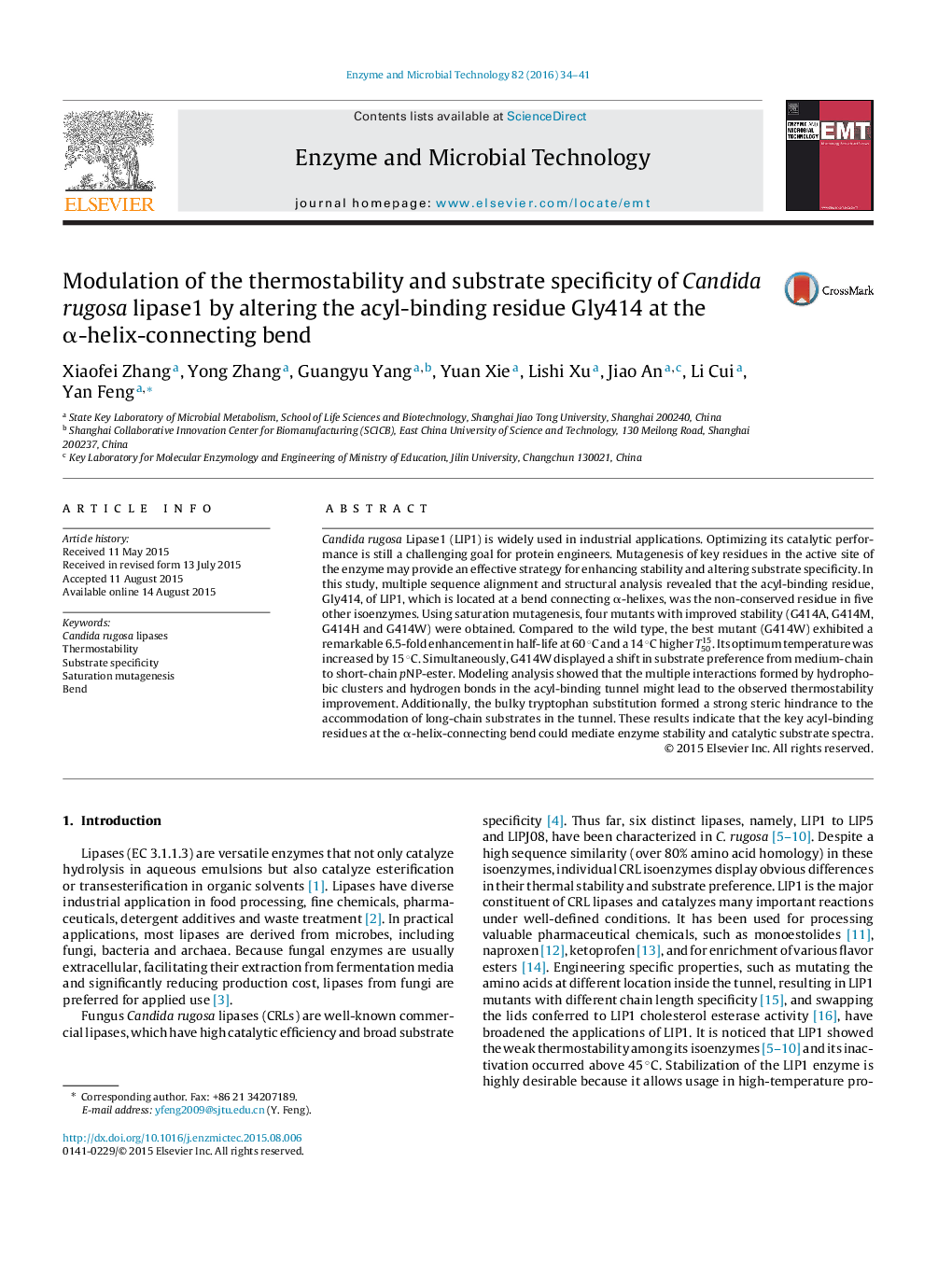| Article ID | Journal | Published Year | Pages | File Type |
|---|---|---|---|---|
| 16893 | Enzyme and Microbial Technology | 2016 | 8 Pages |
•T5015 values of the mutants were increased by 0.5–14 °C compared to that of WT.•G414W substitution preferred to the short-chain pNP-ester substrates.•The improved thermostability may be due to the newly formed hydrophobic clusters.•The additional hydrogen bonds maybe lead to improve thermostability.•Blocking the tunnel of lipase may limit the hydrolysis of the long-chain substrate.
Candida rugosa Lipase1 (LIP1) is widely used in industrial applications. Optimizing its catalytic performance is still a challenging goal for protein engineers. Mutagenesis of key residues in the active site of the enzyme may provide an effective strategy for enhancing stability and altering substrate specificity. In this study, multiple sequence alignment and structural analysis revealed that the acyl-binding residue, Gly414, of LIP1, which is located at a bend connecting α-helixes, was the non-conserved residue in five other isoenzymes. Using saturation mutagenesis, four mutants with improved stability (G414A, G414M, G414H and G414W) were obtained. Compared to the wild type, the best mutant (G414W) exhibited a remarkable 6.5-fold enhancement in half-life at 60 °C and a 14 °C higher T5015. Its optimum temperature was increased by 15 °C. Simultaneously, G414W displayed a shift in substrate preference from medium-chain to short-chain pNP-ester. Modeling analysis showed that the multiple interactions formed by hydrophobic clusters and hydrogen bonds in the acyl-binding tunnel might lead to the observed thermostability improvement. Additionally, the bulky tryptophan substitution formed a strong steric hindrance to the accommodation of long-chain substrates in the tunnel. These results indicate that the key acyl-binding residues at the α-helix-connecting bend could mediate enzyme stability and catalytic substrate spectra.
Graphical abstractFigure optionsDownload full-size imageDownload as PowerPoint slide
